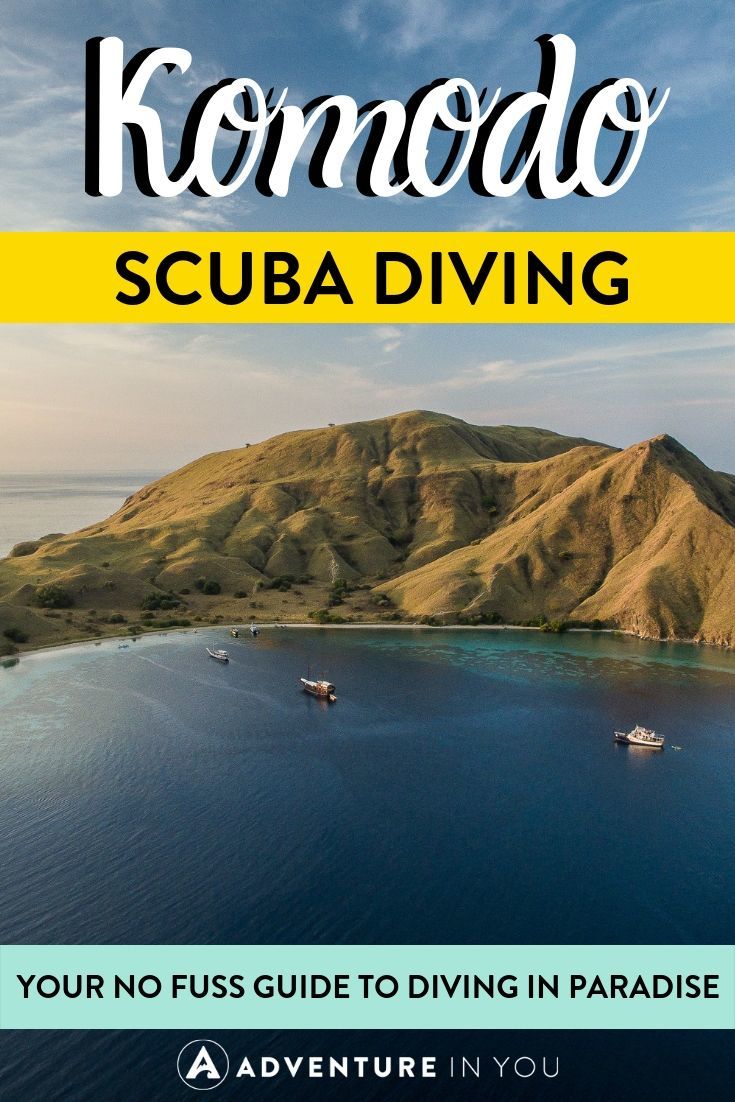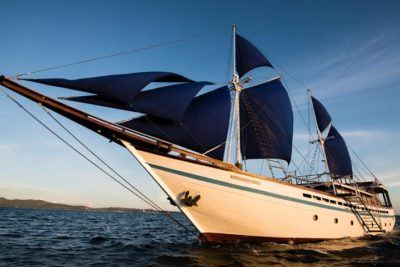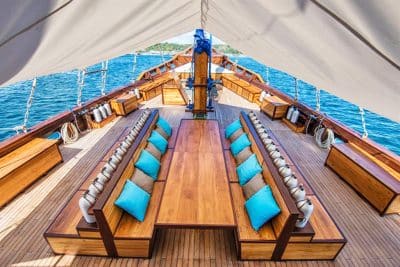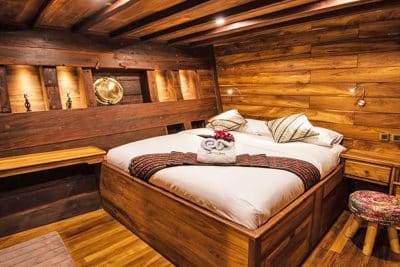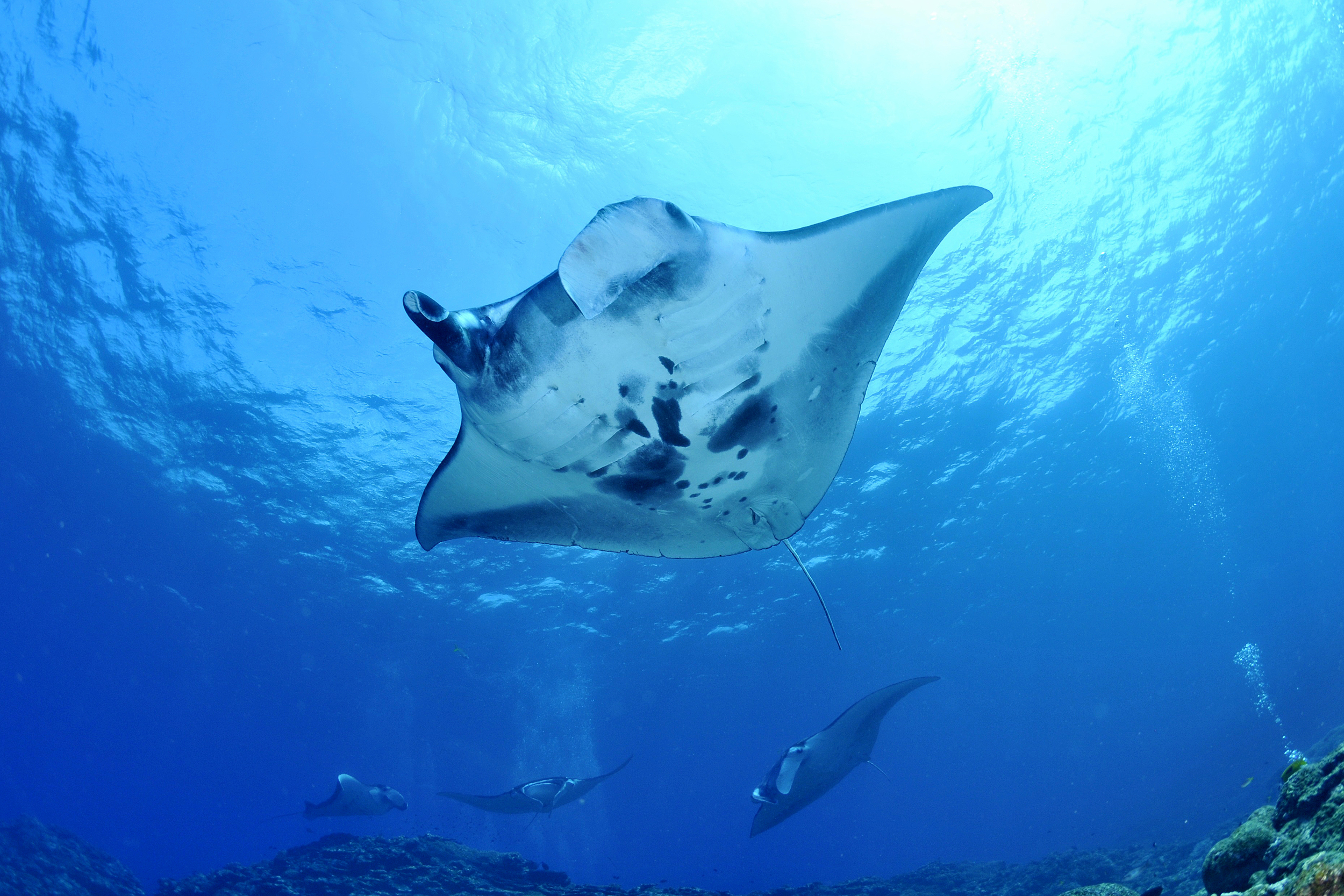While famed for the fiery dragons that inhabit these Islands, Komodo Island is also teeming with vibrant life below the surface. Untouched reefs, graceful manta rays, and schools of fish as far as the eye can see. Komodo is truly a diver’s paradise.
Diving in Komodo National Park should be at the top of any serious diver’s bucket list as it holds some of the best dive sites in the world. The currents are strong but rewarding with an abundance of fish, sharks, turtles, and rays that make up this diverse ecosystem.
Be prepared to be amazed, as Komodo Island is sure to WOW anyone who’s ready for an insane Indonesian dive.
Keep reading to discover all that Komodo diving has to offer, as well as other epic experiences to be had on the island!

View Contents
Why Dive in Komodo National Park
If you’re looking for a once-in-a-lifetime diving experience, Komodo National Park is the place to be. The area in and around Komodo has been largely protected and preserved, leaving an untouched paradise — especially below the surface.
Komodo reached great fame due to the massive dragons that roam the lands of the islands, but it’s also a premier diving destination, given what goes on in the surrounding waters.
When diving in Komodo, you’re bound to feel like you’re swimming around in an aquarium. With such diversity in marine life and species, you’ll be able to catch glimpses of abundant plants, colorful corals, and sea creatures that aren’t found in many other parts of the world.
On a dive in Komodo, you can expect to see species like manta rays, reef sharks, and even larger varieties like hammerheads and grey sharks! There will also be plenty of fish, such as tuna, barracudas, and giant trevally, not to mention the nudibranchs and pygmy seahorses. On a good day, you may even spot a turtle or two!
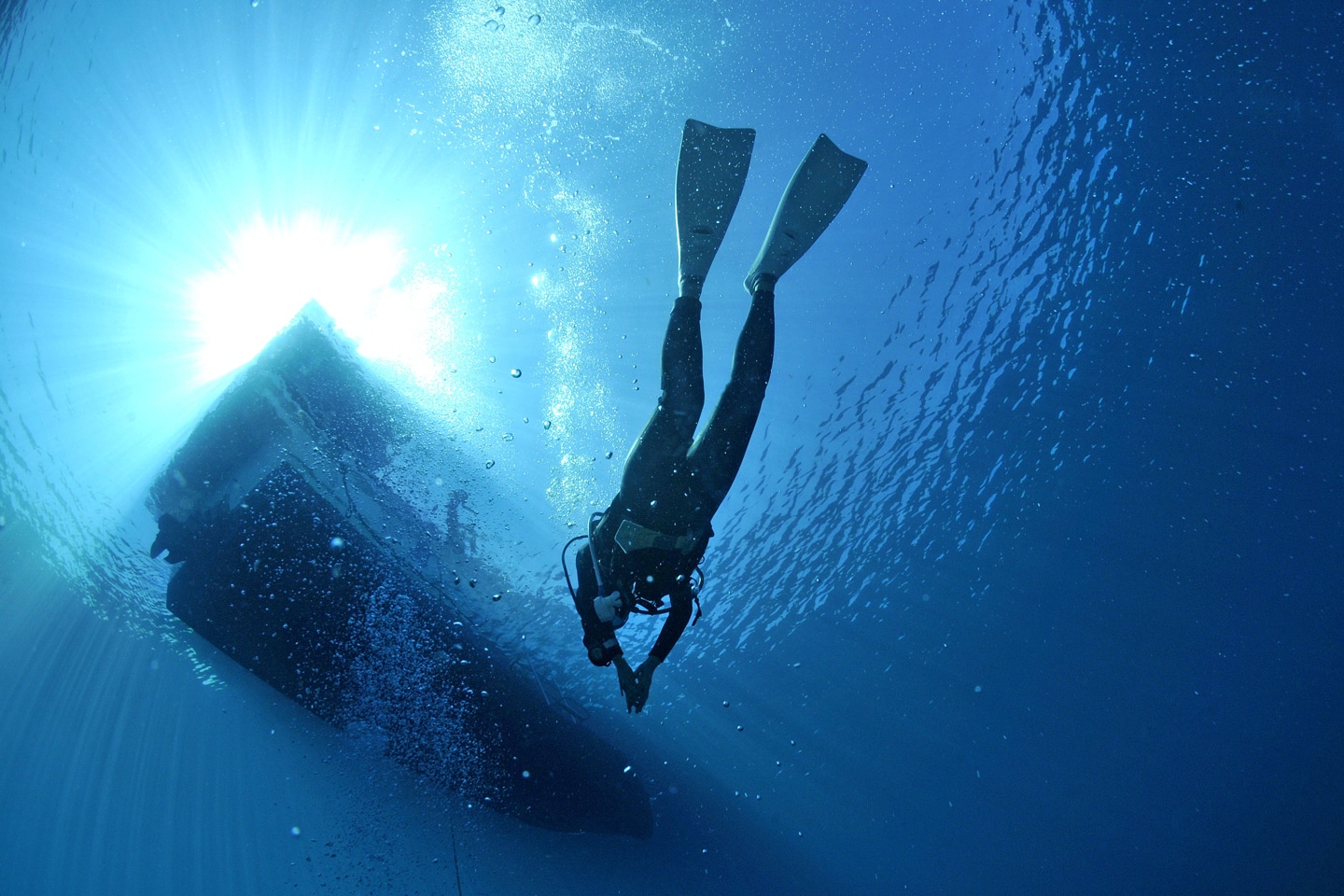
This is a location that you’ll definitely want your underwater camera for because you may never be able to see such a beautiful and abundant marine ecosystem again!
AIY co-founders, Tom and Anna, did an amazing dive trip in Komodo National Park.
Read all about their experience here!
✨The 1 Thing We Never Leave Home Without…✨

Coming from someone who has been traveling the world for the last 8 years AND has been in the hospital 2x, travel insurance is something everyone NEEDS to get. Get a quote below!
Liveaboards in Komodo National Park
Due to the remoteness of the location, a liveaboard is absolutely the best way to experience all the best diving Komodo has to offer.
Liveaboards are the ideal way to dive as you’ll be overnighting on a boat that you can dive directly off! Forget the lengthy trips out to sea and long, exhausting days of traveling mixed with diving. On a liveaboard, you can hit the best and most remote dive sites (typically up to three per day) without an intense travel period.
Diving from a liveaboard is also ideal because you’re able to hit the most popular dive sites before all of the day trip crowds start rolling in. Since you’ll be out on the water before and after those coming from shore, you’ll be able to enjoy some of Komodo’s best without having to navigate between different dive groups.
Plus, many of the dive sites in Komodo can only be reached by liveaboard, so you’re sure to have a unique experience diving where others on day trips aren’t able to reach.
Finally, speaking of unique experiences, almost all liveaboards offer night dives that allow you to visit the underwater world when the sun goes down. Night diving brings on a completely different adventure from diving during the day and it’s often only possible from a liveaboard!
Not only will you get to dive off the boat, but while aboard, you’ll get fed three delicious meals everyday, have a comfortable (often air-conditioned) cabin to sleep in, and have diligent and attentive staff to cater to your every need.
Liveaboards also come fully equipped with a divemaster who is a pro on the location you’re sailing in and will lead daily diving excursions.
Besides diving, many liveaboards also offer other activities to round out your trip. Whether it’s paddleboarding, kayaking, land excursions, or simply relaxing on the sun deck during downtime, you’ll never be bored while aboard a liveaboard!
There are tons of options when it comes to liveaboards in Komodo, all ranging in trip lengths, boat types, and daily price. Due to the abundance of options, you’re sure to find a liveaboard that’s best for you.
Find your perfect Komodo liveaboard here!
Pro Tip: If you’re interested in taking a liveaboard trip, be sure to book far in advance. Komodo is an extremely popular location so trips tend to sell out quite quickly. Save yourself the disappointment and book earlier rather than later!
Best Time to Dive in Komodo
It’s of the utmost importance that you go diving in Komodo when the water is clear so you’ll be comfortable underwater and have the best chance to see an abundance of marine life.
In Komodo, the diving season runs from March until October, although you’re bound to find diving excursions that operate year-round. The water tends to get a little choppier between January and March, so if you choose to go during this time, be sure you’re a strong swimmer!
The best visibility in Komodo (up to 30 meters!) happens between November and January, and you’ll find yourself caught in peak season if you choose to go between April and August.
In terms of spotting marine life, you’ll likely be able to catch sight of manta rays between December and February during rainy season (although there’s a chance you’ll spot them during other times of the year as well), and mola molas in August.
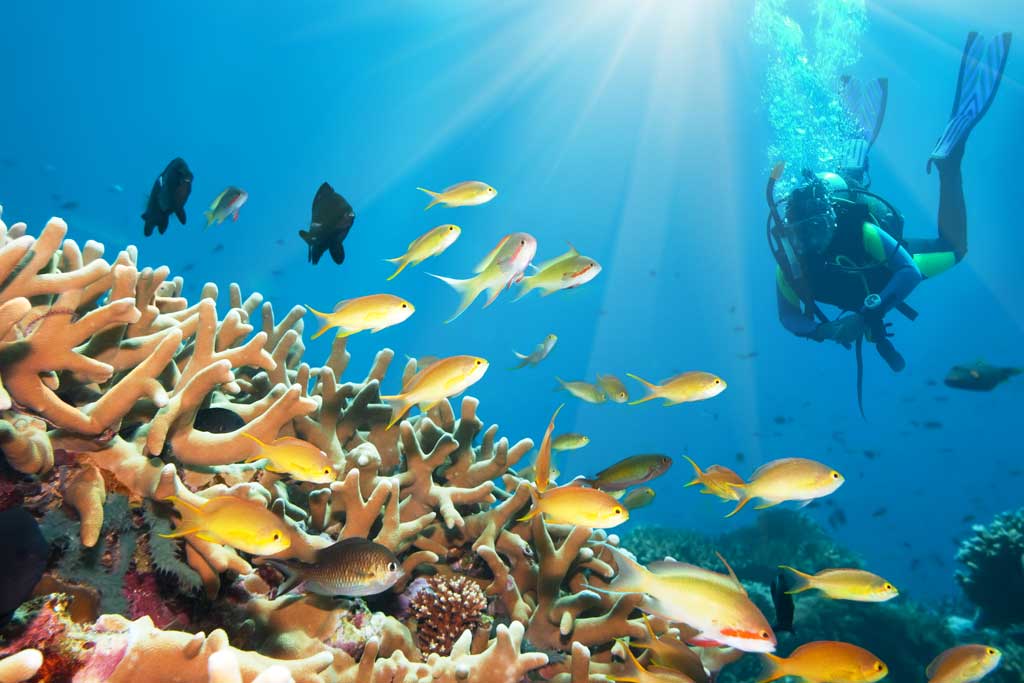
Diving Conditions in Komodo National Park
While there are a select few sites that are suitable for beginners, the overwhelming majority of diving in Komodo National Park is best for advanced divers.
The current in Komodo tends to be extremely strong on almost every dive, making it best suited for those with experience in rougher waters. If you plan on taking a trip to the waters of Komodo, you should be confident in drift diving and bring the appropriate gear like gloves and reef hooks.
Since the current is driven by tides, dive sites must be carefully chosen based on the daily conditions. The islands of Komodo and Rinca create a bottleneck effect between the Indian and Pacific Oceans which is why the waters can be so rough, but also why there’s such an abundance of marine life!
Always be sure to listen to and trust your divemaster or instructor as they are trained to know what’s best in challenging situations. They will also be able to advise you on the currents and water patterns to ensure your safety for the duration of your excursion.
Since conditions can be rough, it’s good practice (in Komodo and diving in general) to carry a neon dive flag or collapsible pole stowed away while you’re diving in case you get swept away by the current.
You should also absolutely be sure that you have dive insurance in case of any emergencies along the way.
Best Dive Sites in Komodo National Park
There are so many beautiful dive sites in Komodo, each offering the diver a different and unique underwater experience. Here are a few of the best ones to give you some inspiration for any upcoming trip!
Manta Alley
Tell me, does it get any better than getting up close and personal with a manta ray? One of the best dive sites in Komodo is Manta Alley where divers have reported seeing up to 20 mantas on a single dive!!!
Besides manta rays, at this particular location, you’re likely to come across reef sharks, triggerfish and other marine life that makes Komodo such a standout diving location.
Batu Bolong
Besides being one of the main streets in Canggu (Bali), Batu Bolong is a world-famous dive site that draws people from near and far to marvel at the wonders in these magical waters.
The site surrounds what looks like a small rock, but upon heading deeper, you’ll quickly realize that this small rock is actually a reef that extends 70 meters below the surface! It’s absolutely filled with diverse marine life as the place has been untouched by humans due to the strong currents making fishing impossible.
This paradise-like reef will bring you sights of whitetip sharks, colorful corals and sea sponges, but the real showstopper here are the fish. Every color, size and shape, fish swarm around the reef in abundant schools that will give you a vision unlike anything you’ve ever seen before. Batu Bolong simply cannot be missed!
Castle Rock
Castle Rock gets its name from the multiple pinnacles that stick up from the water, creating castle-like spires on the surface.
Around these pinnacles live many schools of fish made up of fusiliers and surgeonfish. Here you’ll also find an abundance of trevallies, jacks, barracuda, mackerels and more.
If you’re seeking something a little larger, you’ll may also have a chance encounter with a white or blacktip shark (especially when the current is strong), but the real highlight is the occasional dolphin swimming underwater!
Crystal Rock
Located right next to Castle Rock, you’ve also got Crystal Rock, a pinnacle that occasionally makes its way to the surface when the tide is low enough.
Around this reef is an abundance of bright orange sponges and corals like you’ve never seen before. Because the water is so shallow at this site, you’ll also be able to see fish like anthias and damselfish. On the larger end of the spectrum, you can also expect to see the likes of cuttlefish, butterflyfish, octopus, and the occasional hawksbill turtle!
If you swim around Crystal Rock to the northwest side, you’ll find a hump rising from the bottom to about 14 meters. There will also be a gap that stretches down 20 meters in between the pinnacle and the mound. Diving here during a slack tide will bring you an insane abundance of schools of fish filled with sweetlips, snappers, Giant trevally, Napoleon wrasse and the occasional whitetip sharks as well.
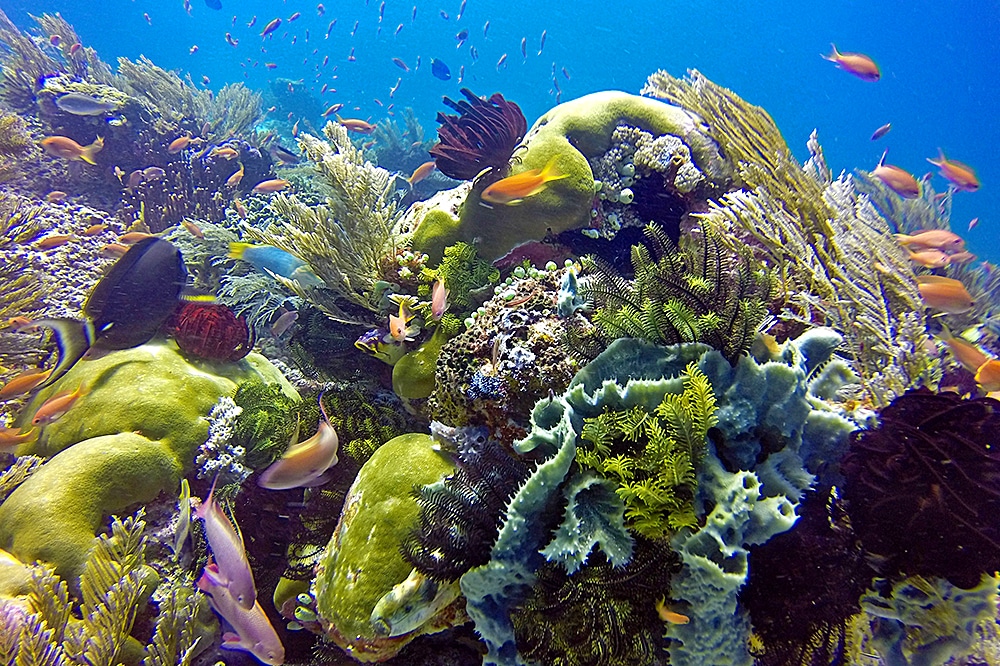
Yellow Wall (of Texas)
A last dive site in Komodo that simply can’t be missed is the Yellow Wall (of Texas). The Yellow Wall is true to its name as it features a giant selection of yellow sea cucumbers that make this dive site a bright place to swim around.
Located on the south of Rinca Island and an ideal place for macro photography, you’ll be pleasantly surprised by the fish, sharks, and the occasional turtle that swim around you while diving at this location.
Other Things to Do in Komodo Island
Besides diving, there’s a ton to do on these beautiful Indonesian islands, so be sure to leave some space in your itinerary to make the most of your visit!
Visit the Komodo Dragons
The real draw of Komodo is, of course, the giant dragons that inhabit the islands. Komodo Dragons are what has really brought fame to this area as more than 5,000 of them roam free between here and Rinca.
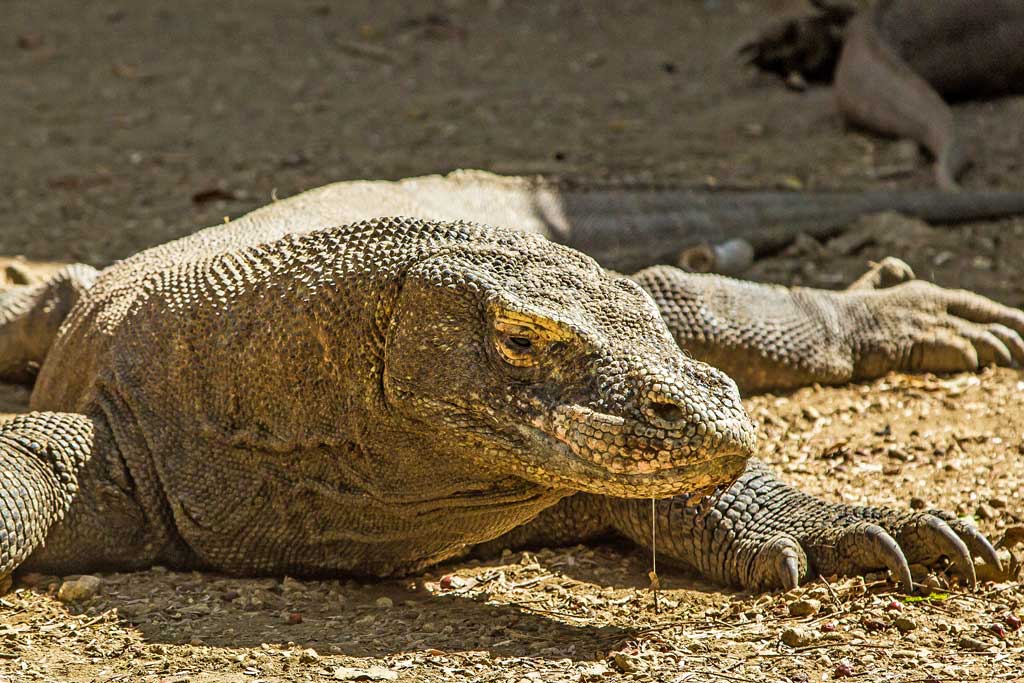
Growing up to eight and a half feet long and weighing up to 200lbs, these majestic creatures are sure to make the top of your list of things to do at Komodo National Park. You can take a tour to visit the dragons or a guided trek where you’re sure to spot a few in the wild.
If you choose to take a liveaboard trip in Komodo, most boats will offer a land excursion at some point where they’ll dock for a few hours to take a tour of the islands. This way, you’ll get to experience all that this special place has to offer, both underwater and on land.
Just be sure not to get too close to the dragons, don’t look them in the eye and absolutely, never touch them!
Trek Padar
If you’ve packed your hiking shoes, head over to Padar, the third island that makes up Komodo National Park. Hiking to the summit of the island isn’t easy but will offer you one of the best viewpoints ever.
Sandy cliffs, crystal clear beaches, and pristine blue waters — doesn’t get much better than that!
Be sure to be properly prepared as the hike is a tough one. Wear secure shoes, bring lots of water, and don’t forget your sunglasses! You’re in for an epic treat.
Relax at Pink Beach
Looking for a little bit of R&R on your Komodo trip? Head over to Pink Beach on Mawan Island for the view of a lifetime.
The white sand mixed with bits of red coral creates a pink glow beneath your feet, making it the ultimate place to relax after lots of hiking or diving and take some prime Instagram shots.
Pink Beach is also an awesome place to snorkel, so be sure to bring along your gear to catch a glimpse of the marine life close to shore. You’ll be able to spot tons of tropical fish as well as beautifully preserved corals that are right near the surface.
How to Get to Komodo Island
The first step to getting to the Komodo Islands is getting to Bali, Indonesia first. Bali is an international hub with a large airport that has flights coming in from around the world on a daily basis. Fly into Ngurah Rai International Airport (Denpasar) and from there you’ll be able to make your way over to Komodo.
To get to Komodo from Bali, you can then take a flight from Denpasar to Komodo’s Labuan Bajo Airport. The flight only takes about 45 minutes and there are tons of budget prices so you should be able to find tickets that won’t break the bank.
Travel Tip: When booking your flights both to Bali and to Labuan Bajo, I highly recommend using Skyscanner to get the best deals! If you have a flexible schedule, you can even set your search to the entire month so you’re able to tell which days have the cheapest tickets.
When you arrive at Labuan Bajo, you’ll then have to board a ferry to get to the actual Islands. The most inexpensive way to do this is through one of the many tour companies, but if you have the money to spend, you can also book a charter boat to take you directly to the land of the dragons.
Alternatively, if you book a liveaboard trip, you’ll only have to get yourself to either Bali or Labuan Bajo, the two places liveaboards depart from. Booking a liveaboard will save you a ton of hassle in terms of figuring out complex transportation and long boat rides as you’ll have helpful staff to guide you through the entire process!
Where to Stay on Komodo Island
A final, and most important, consideration for your trip to Komodo is finding somewhere to stay. You’ll be hard-pressed to find accommodation directly on the islands as it’s a national park, but there are plenty of options nearby, most of which will arrange a trip to the islands for you.
Here are some of our favorites to get you started.
Dragon Dive Komodo Hostel
Looking to meet a few people on your trip to Komodo? Staying at Dragon Dive Hostel is the best way to get acquainted with fellow travelers!
With options of mixed dorms, separate male and female dorms, and private rooms, you’ll have your fair share of choice when it comes to where you’ll be sleeping in this completely air-conditioned hostel.
Your stay will be full of flair with a pool, garden, and Italian restaurant right on site, as well as a club and convenience store right out the front door. Staff at the hostel are more than happy to help arrange diving and snorkeling excursions, and there’s even a dive center at the hostel itself!
Read: Dragon Dive Komodo Review
Flores Xpirates Dive Camp
Sitting right on the beach of Sebayur Island, this mid-range accommodation option has everything you could ask for in terms of an island getaway.
The rooms are spacious, there’s plenty of seating areas throughout the property and you’ll be waking up to sea views. What could be better than that?
While not located directly on Komodo, the staff at Flores can help you set up a day tour to the Komodo National Park so you can see those dragons. They can also help arrange other activities like snorkeling and diving during your stay. Plus, they even have a PADI dive center on-site!
You’ll love staying here, especially with the included breakfast and airport transfer. You won’t be able to believe you’re getting all of this at such a low price point!
Sudamala Resort
If you’re seeking island luxury on your Komodo trip, look no further than Sudamala Resort. It truly doesn’t get more comfortable than a bungalow on the beach, and this resort completed them with absolute style.
The bungalows are outfitted with beachy decor and air conditioning (a must in Indonesia), and you’ll be treated to sea views right from your bed.
Besides hitting the private beach and going snorkeling or diving, you can also arrange to have a massage at the hotel or take a fishing trip out on the ocean. Although you’ll be a 45-minute boat ride from the islands, you may never want to leave this place due to all of the spoils it offers!
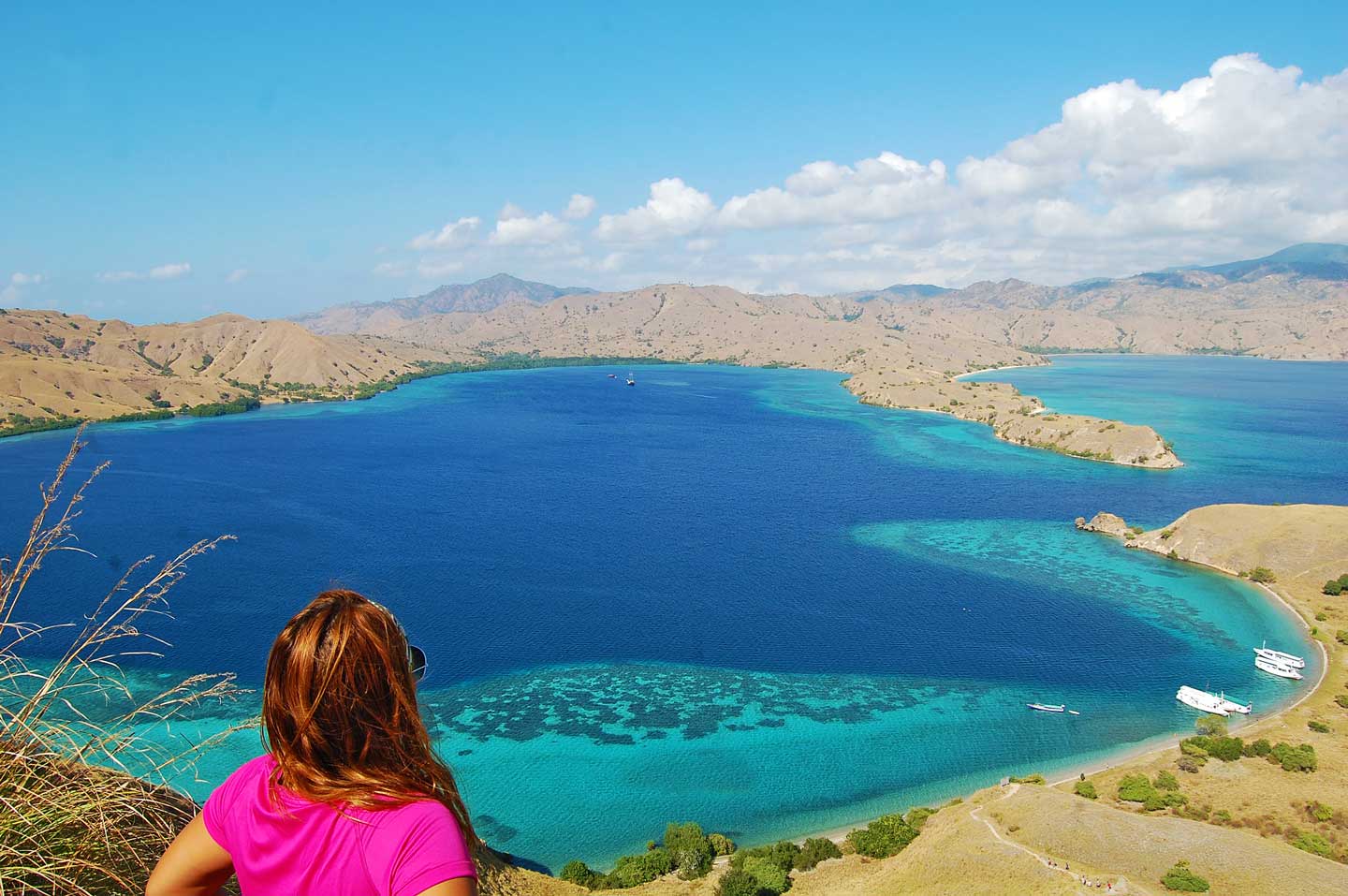
As far as diving in Indonesia (and Asia in general) goes, the Komodo Islands is one of the top picks. The sheer abundance of dive sites, along with the secluded location makes it an untouched mecca of fish and other marine life. Being able to immerse yourself in this during a dive is something that you’ll remember forever.
So what are you waiting for? It’s time to grab your wetsuit and go! And don’t forget to send us a photo with the dragons!
Searching for more diving inspiration? Check out these articles
- Best Scuba Diving Destinations in the World
- Galapagos Island Scuba Diving: Everything You Need to Know
- Everything You Need to Know About Scuba Diving in Moalboal Cebu
Inspired? Pin It!
